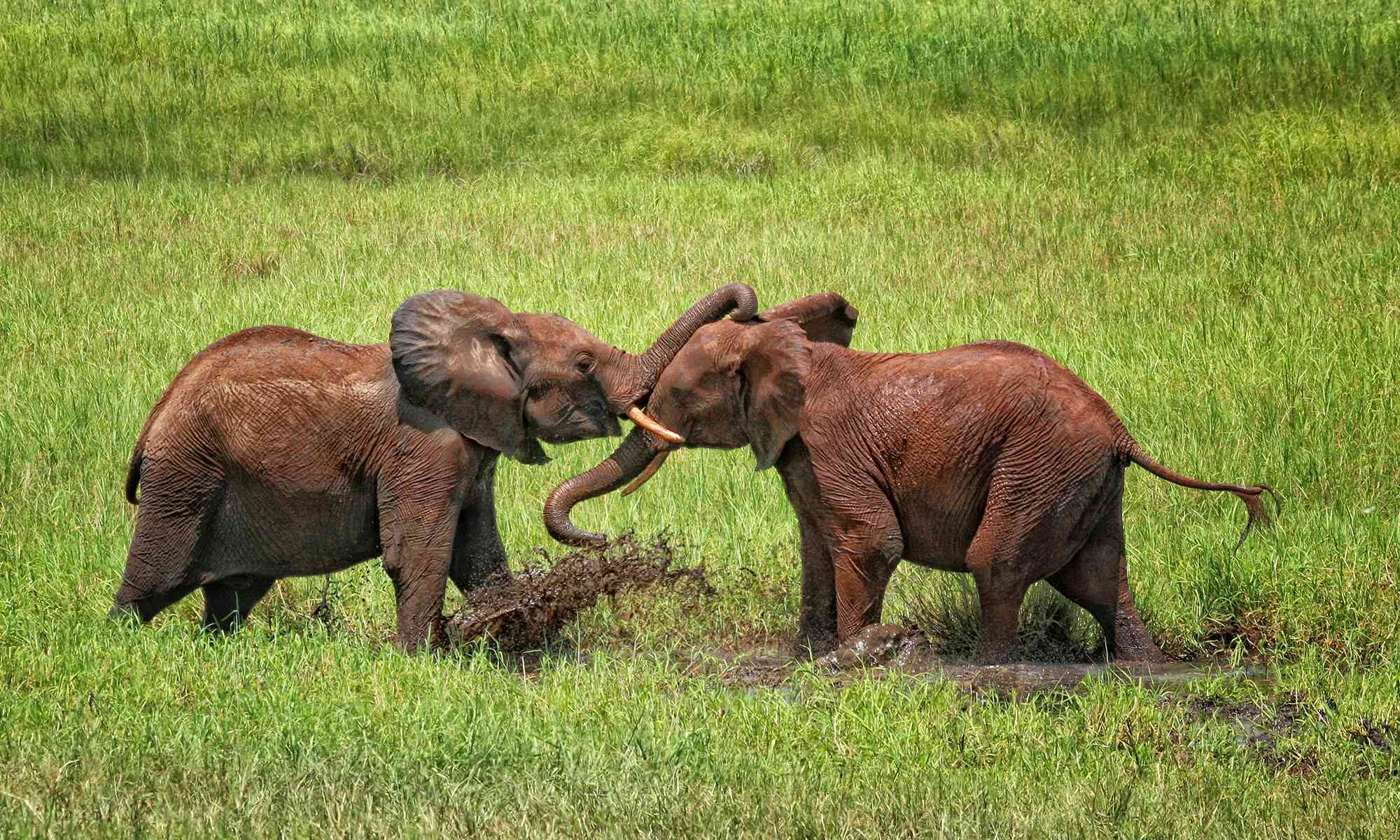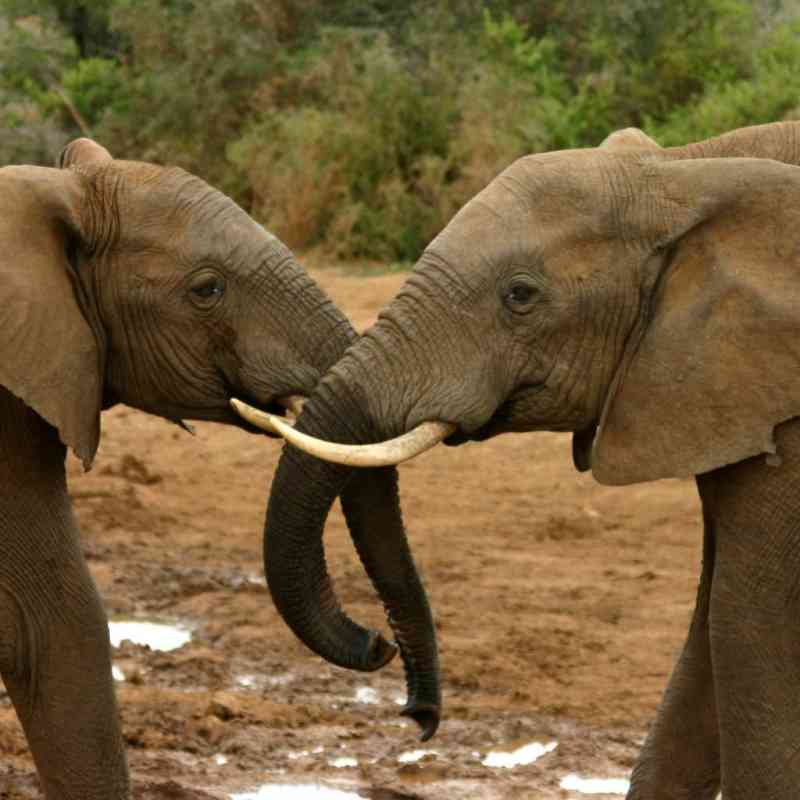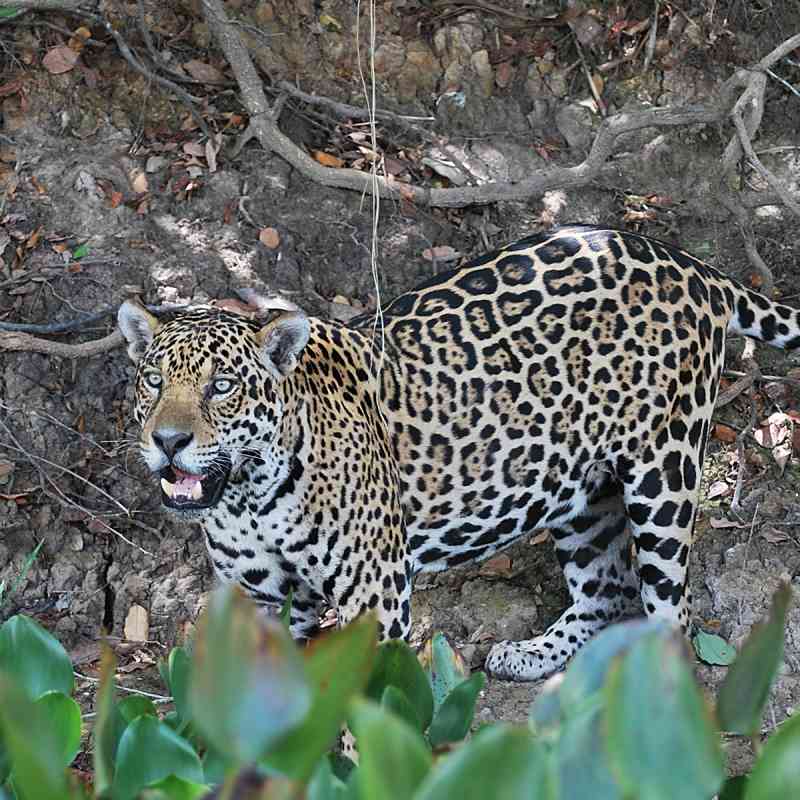As highly social, intelligent and ecologically-important animals, elephants are a symbol of loyalty, compassion and ecosystem engineering. Tragically, because of the illegal trade of their ivory, elephants have also emerged as a symbol of international wildlife trafficking.
Elephants are classified into two species: the African elephant (Loxodonta africana) and the Asian elephant (Elephas maximus). Elephants live in tight-knit matrilineal family groups led by a matriarch who is often the eldest female. In their habitats, elephants play the role of keystone species and ecosystem engineers because they reshape the environment, uprooting vegetation while they forage and creating new waterholes as they dig for water.
Since elephants are not native to North America, Defenders does not work on their conservation directly. As America’s leading voice for imperiled wildlife, Defenders has a critical role to play in stopping the deadly scourge of elephant poaching by advocating for the adoption of a near ban on commercial trade of ivory to the United States. Defenders is an active participant in the Convention for International Trade in Endangered Species (CITES) and helps ensure the regulation of trade for imperiled plants and animals across the globe. We also study and advocate for stronger monitoring and law enforcement of trafficked wildlife and wildlife products, including elephants, into the United States and between U.S. states.
Habitat loss is one of the key threats facing elephants. Climate change projections indicate that key portions of elephants’ habitat will become significantly hotter and drier, resulting in poorer foraging conditions and threatening calf survival. Increasing conflict with humans due to encroachment on elephant habitat and poaching for ivory are also driving elephant declines globally.
|
Endangered Species Act
|
IUCN Red List
|
CITES
|
|
Appendix I
|
||
|
The African elephant is threatened and the Asian elephant is endangered. |
The African elephant is vulnerable and the Asian elephant is endangered. |
Except the populations of Botswana, Namibia, South Africa and Zimbabwe, which are included in Appendix II subject to annotation 2. |
Buy responsibly when looking to purchase products – avoid palm oil and threatened rainforest woods, buy shade grown coffee and sustainable cocoa, and reduce your carbon footprint. Choose responsible ecotourism trips and tour operators and treat wild animals with respect. Speak up for habitat and wildlife protections.
African elephants live in diverse habitats including wetlands, forest, grassland, savanna and desert across 37 countries in southern, eastern, western and central Africa. The Asian elephant is found across 13 countries in South, Southeast and East Asia.
At the turn of the 20th century, there were a few million African elephants and about 100,000 Asian elephants. Today, there are an estimated 470,000 African elephants and between 40,000 - 50,000 wild Asian elephants.
Elephants form deep family bonds and live in tight matriarchal family groups of related females called a herd. The herd is led by the oldest and often largest female in the herd, called a matriarch. Herds consist of 10-140 individuals depending on terrain and family size. When a calf is born, it is raised and protected by the entire herd. Males leave the family unit between the ages of 12-15 and may lead solitary lives or live temporarily with other males. Elephants are extremely intelligent animals and have memories that span many years. This memory serves matriarchs well during dry seasons when they guide their herds, sometimes for tens of miles, to watering holes that they remember from past years. Elephants also display signs of grief, joy, anger and play. Recent discoveries have shown that elephants can communicate over long distances by producing a sub-sonic rumble that can travel over the ground faster than sound through air. Other elephants receive the messages through the sensitive skin on their feet and trunks. It is believed that this is how potential mates and social groups communicate.
Mating Season: Mostly during the rainy season.
Gestation: 22 months.
Litter size: 1 calf (twins rare).
Calves weigh between 200-250 lbs at birth. At birth, a calf's trunk has no muscle tone, therefore it will suckle through its mouth. It takes several months for a calf to gain full control of its trunk.
Staples: Grasses, leaves, bamboo, bark, roots. Elephants are also known to eat crops like banana and sugarcane which are grown by farmers. Adult elephants eat 300-400 lbs of food per day.
Related Issues









